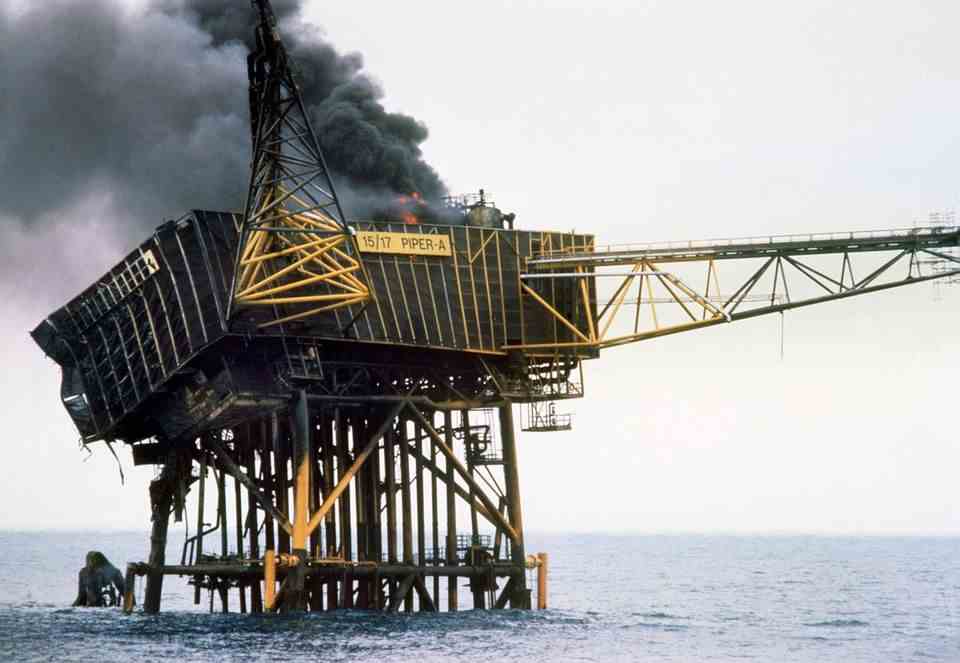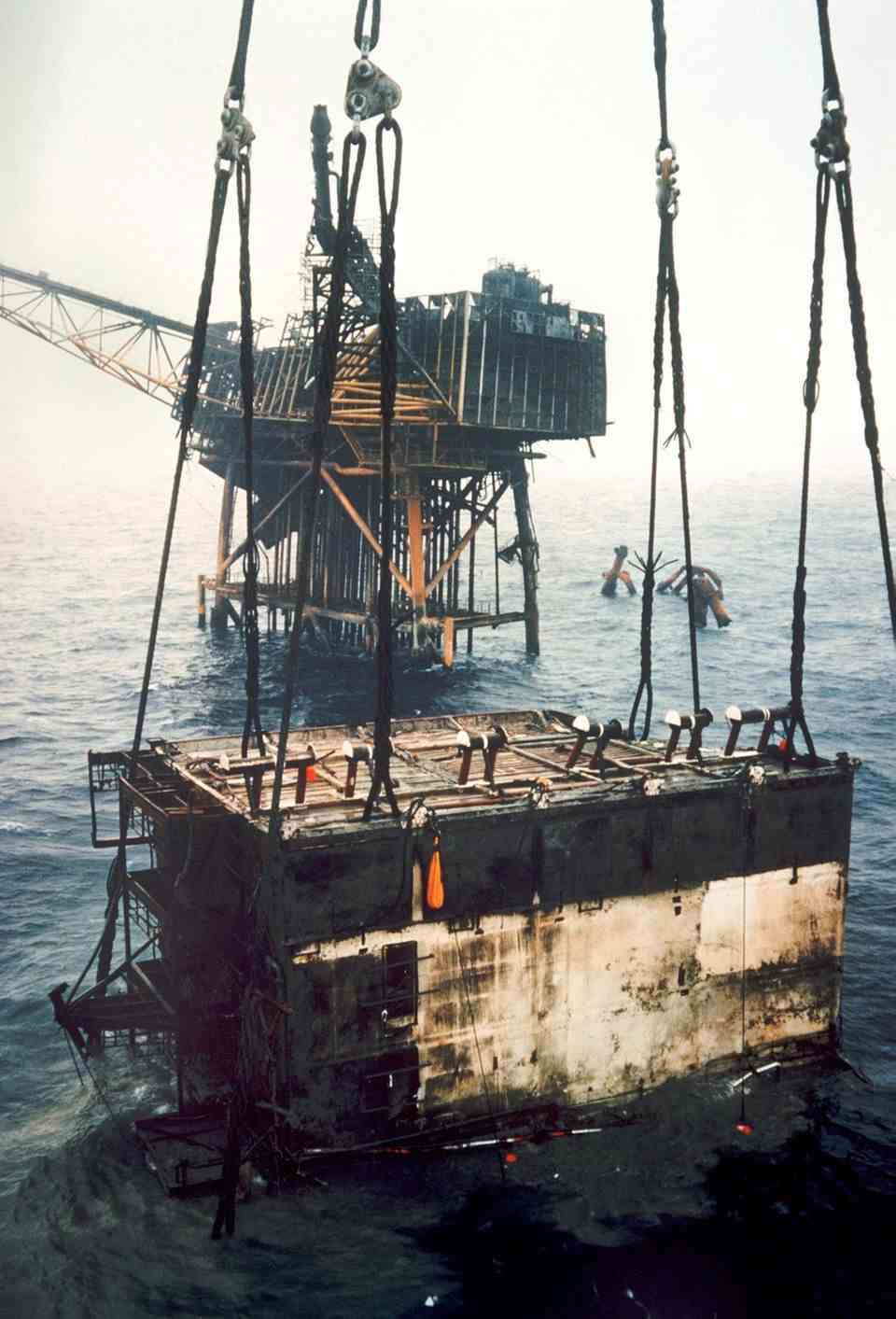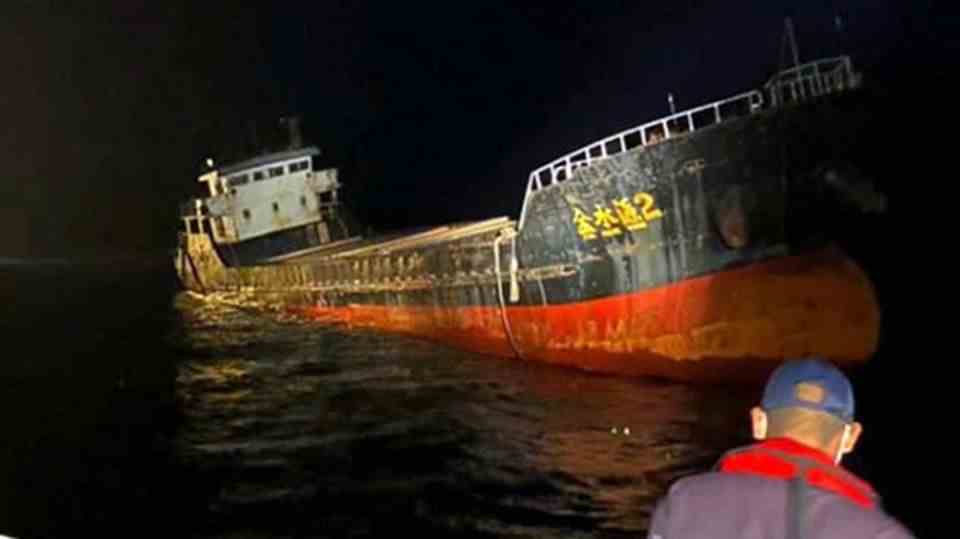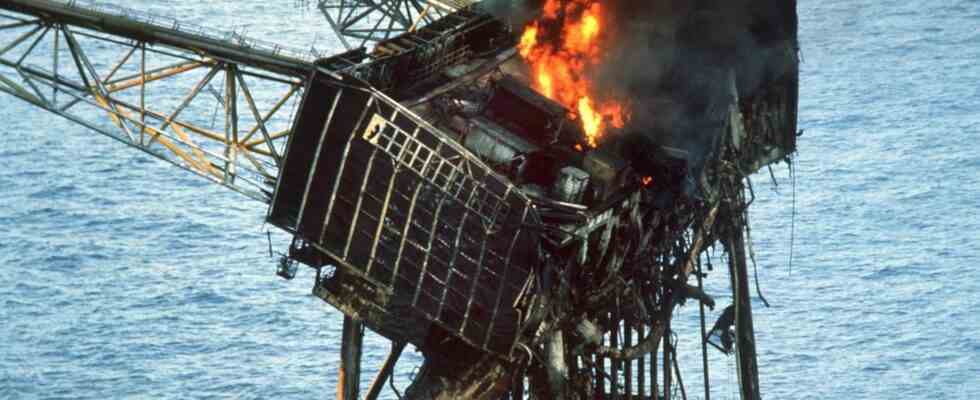34 years ago today, several explosions on the “Piper Alpha” oil platform caused its sinking. 167 men died in the terrible accident on the North Sea.
It is a beautiful day when the “Piper Alpha” lies around 180 kilometers off the coast of Aberdeen in Scotland on that Wednesday, July 6, 1988. “No wind and calm,” is how one of the workers later described it. On that day, 226 men are working on one of the most profitable oil platforms in the North Sea.
The huge oil rig is designed to withstand winds of up to 185 kilometers per hour and waves of up to 29 meters in height. Since 1976 it has transported three very flammable products: natural gas, liquefied petroleum gas and crude oil. The production deck consists of four sections. In section A, the oil is pumped from the seabed. Sections B and C produce oil and gas. Section D generates electricity. Above it all stands a self-contained town with housing and entertainment for the workers. More than half of the 230 meters is under water.
Pump failure on the “Piper Alpha”
At 9.45 p.m. an alarm went off. A condensate pump had switched off. Condensate is the term for liquefied petroleum gas, LPG for short. The pump compresses the volatile and highly flammable liquid to 78 atmospheres, which is 25 times the pressure in a car tire. Nothing unusual. But she can’t be hired again. As all the power supply of the offshore construction works depends on this pump, there is only a few minutes to get the pump running again, otherwise the power supply would be completely lost. A backup pump is off for maintenance. However, since these have not yet started, the head production worker authorizes the use of this pump. A serious mistake, as will be shown later.
At 21.55 there is another alarm due to a gas leak on the deck above the pump. Shortly thereafter, further alarms follow due to small gas leaks. Then a big gas alarm follows. Finally, at 10 p.m., there was an explosion. Shortly thereafter, another explosion rocks the platform. 226 workers are stuck on the burning oil rig.
The explosion knocks machinist Geoff Bollands off his desk in the control room and throws him twenty feet. “The lights went out, the turbines shut down and there was smoke everywhere,” he recalls in a documentary about the accident. He pushes the rig’s emergency shutdown lever and stumbles out of the shattered control room. All main oil and gas lines are automatically closed. The gigantic power generators switch off. Because the main alarm system was destroyed, no siren sounds.
Workers jump into the sea in panic
Bolland and 20 of his colleagues are surrounded by flames on the blazing platform. You climb down a rope about 23 meters down to a deck about six meters above the water surface. Then they jump into the sea. Surrounding ships have noticed the disaster and immediately send lifeboats to help the survivors. Within minutes, Bollands and his men are pulled from the sea.
At around 10.10 p.m. there was another gigantic explosion. The evacuation plan is to wait in the canteen until help arrives. But as the workers wait there, smoke seeps in. One of the workers, Jim McDonald, doesn’t want to wait and starts looking for an escape route through the laundry. It takes some time because the thick smoke makes the search difficult. Eventually he makes it into the room with the washing machines, runs through it and opens the door out onto the rescue deck. He makes his way through the flames to a platform, from where he jumps 21 meters into the North Sea. He clings to a pillar of the oil rig until a little later he is picked up by a lifeboat.

After several explosions only a small part of section A of the “Piper Alpha” sticks out of the water
© Press Association code 7078-6 / Picture Alliance
At 10:50 p.m. another explosion occurs. Debris is thrown 800 meters through the air. The detonation is so powerful that other ships can still feel it a mile away. Half an hour later, another explosion occurs. One of the cranes collapses. Then the derrick. The platform then tilts to the side. The main living quarters with the canteen where the workers await rescue tilt to the other side and slide under the waves. It’s her death sentence. Shortly thereafter, the rest of “Piper Alpha” is swallowed up by the North Sea. At 12:45 a.m., the 20,000-ton oil rig disappeared. Only a small part of Section A remains. 167 men are killed, including two rescue workers.
This is how the disaster happened on the “Piper Alpha”
A team of experts has been investigating the incident for more than three years. The wreckage is distributed 145 meters below the water surface, so the investigation is based only on witness statements and photos taken by surrounding ships. As it turns out, the replacement pump should not have been used after the pump failed because the associated pressure relief valve was missing and the opening was only provisionally covered with a metal disc. When the foreman then pumped more gas into the line, this condensate was able to escape, which resulted in many small gas alarms, one large gas alarm and finally the first explosion.

In October 1988, three months after the accident, parts of the “Piper Alpha” were recovered from the North Sea
© Press Association code 7078-12/ / Picture Alliance
But how could the fire get so big and cause more explosions? Normally, a fire barrier in section C should be able to withstand the flames for six hours. However, the explosion caused the individual panels of this wall to rupture and the flying debris damaged another condensate pump.
Further investigation also revealed that divers working on the platform that day had placed rubber mats on the descent platform to the sea to avoid injuring themselves on the sharp-edged metal grid floors. Falling burning oil, which would normally have passed through metal mesh floors without further consequences to the sea, now collected on these mats, which were located directly under a high-pressure connection line. The rising heat ruptured the pipe, suddenly ejecting 15 to 30,000 tons of gas under high pressure – half a ton of gas per second. The gigantic fireball with a diameter of 150 meters enveloped the entire platform.
At the time of the disaster, two lines were still operational. One of them contained 1,120 tons of compressed gas, three times what had just shot out of the other line. This and the last line also exploded shortly thereafter, thus sealing the sinking of the “Piper Alpha”. That night, 167 people are killed, including two rescuers.
Missing safety valve led to disaster
When two of the oil rig’s living quarters are recovered three months later, 81 bodies are found. Surprisingly, a large proportion of the documents found are still legible, such as permits for maintenance work. Also, because the pump and associated safety valve were on two different parts of the platform, the pump maintenance permit and safety valve form were not kept together. Papers were sorted by location. As a result, when checking the work permit for the pump, the production manager could not see that the safety valve had been removed and the opening was only provisionally sealed. So nobody noticed the missing valve, especially since the metal disc that replaced the safety valve was several meters above the ground and was hidden by machinery.

The 20,000 ton “Piper Alpha” before the accident
© PA / Picture Alliance
One investigator at the time recalled, “When Pump B was stopped and someone asked if they could start the other pump, a maintenance foreman said, ‘Of course’.” Unaware that the safety valve was missing, the workers started the pump, starting the fatal cycle of disaster.
After the accident, the oil company Occidental, which owned the platform at the time, was initially blamed for the disaster. However, in September 1997, a judge later named two workers who had opened a previously untested pipeline and improperly installed a critical section as the cause.
The remains of the “Piper Alpha” were blown up in March 1989. Many of the bodies of the 167 victims were never found. Only 61 workers survived the accident.

Watch the video: Workers on an oil platform off the coast of Thailand make a chilling discovery. A Chinese ghost ship appears in the dark – there are neither crew nor papers on board.
Sources: National GeographicDPA, Official investigation report

